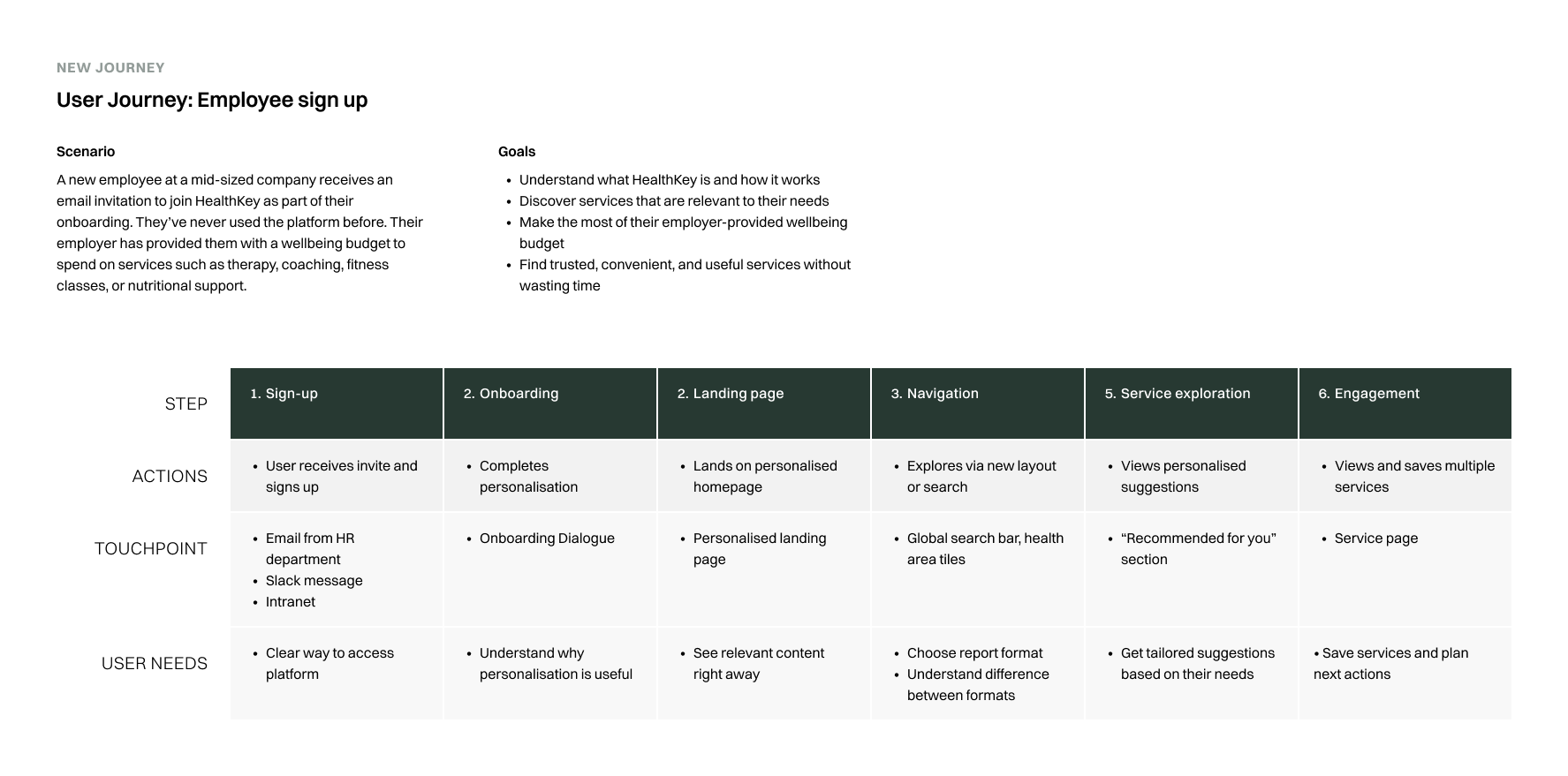




While HealthKey offers a range of great health services, we observed that new users tended to disengage shortly after signing up. This project focused on improving the experience of new users, encouraging them to explore the platform further and engage with content and services that are more relevant to their needs.
The challenge
While the platform offered great content and value, we observed that new users tended to disengage shortly after signing up
The goal of the project was to improve four key metrics:
I interviewed five professionals aged 25 to 60, who currently receive employee benefits through other platforms. Participants were presented with a scenario where, as new employees, they’d be invited to join HealthKey during their onboarding process.

1. Users felt overwhelmed by too many services.
2. The personalisation CTA was often missed
3. Users who began personalisation didn’t clearly see the value
4. Some participants relied on personalisation over search
Based on the research findings, I focused on five key design principles
The revised journey map served as an alignment tool, helping the team define a shared vision for how the new user flow should feel and function.
It clarified the direction we wanted to move in. It highlighted where the design and product decisions could better support user needs across the journey.

Early sketched focused on reducing cognitive load, elevating personalisation, and reorganising navigation onto more intuitive patterns.
We moved the personalisation questionnaire into the onboarding process, ensuring every new user sees it early and understand its purpose.
Replaced the old hub-and-spoke model with a single, dynamic landing page that adapts based on:
1. Information shared during onboarding
2. User behaviour over time
3. User type (users with budgets, users with pre-paid packages, etc.)
Gave search top priority, and introduced browsing by health category. This offered two paths: direct ( search), and exploratory (browse)
Designed reusable components to surface relevant content on services:

| Metric | Before | After | Change |
|---|---|---|---|
New users purchases Users who made 1 or more purchases in the first 3 months after sign up | 8% | 20% | +12%pts |
Personalisation completion Users who completed all steps of personalisation journey | 29% | 72% | +43%pts |
Bounce rate Rate of users who left the landing page without further engagement | 58% | 34% | -24%pts |
User engagement User who viewed 4 or more service or content pages | 25% | 39% | +14%pts |